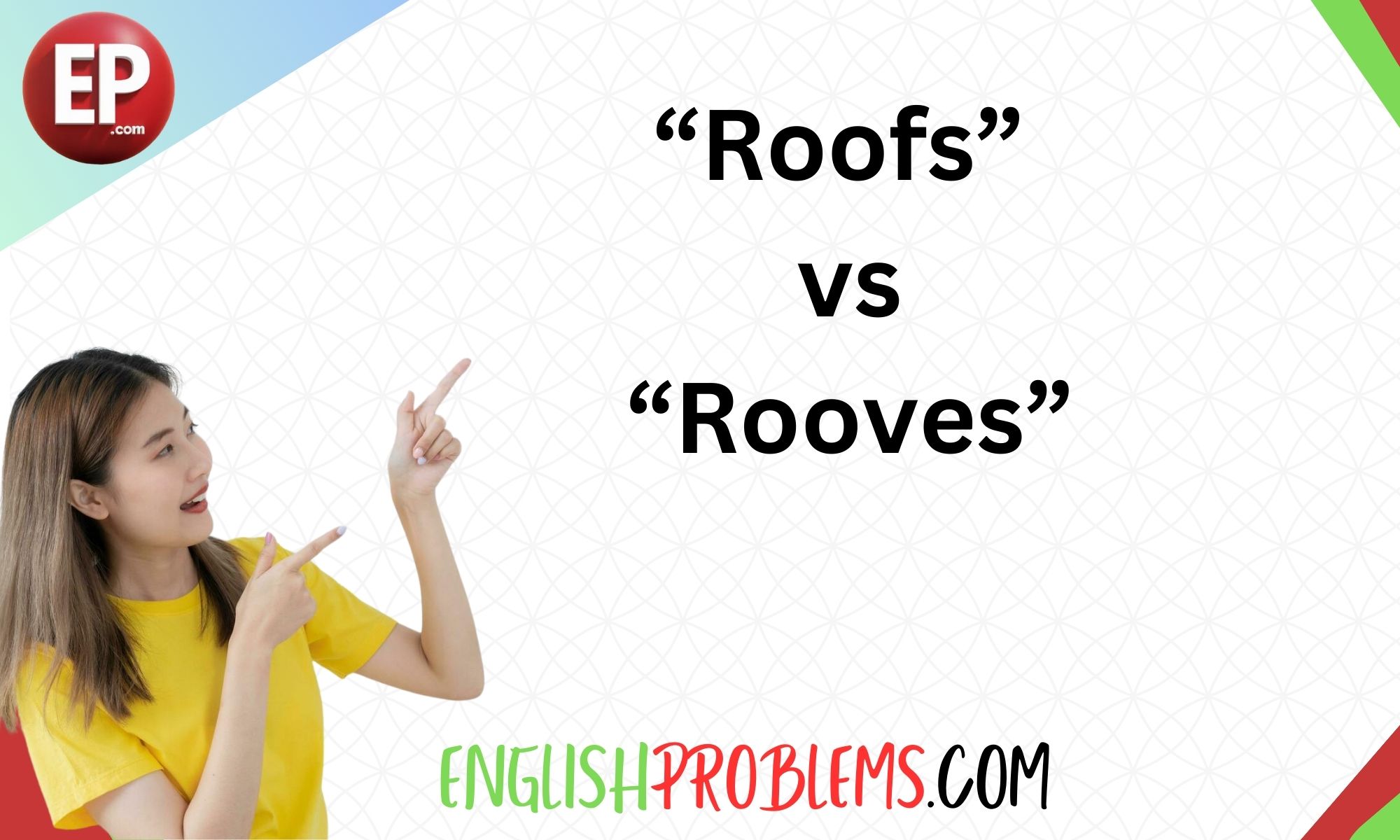The English language is full of quirks and confusions, and one such debate revolves around the terms “roofs” and “rooves.”
You might have come across both terms and wondered whether “rooves” is a mistake or an outdated form.
In this post, we’ll delve into the intricacies of these terms, uncover their historical roots, and clarify which one is correct for contemporary usage.
Understanding the Terms
Definition of “Roof”
A roof is the top covering of a building or structure, designed to protect it from the elements. It plays a crucial role in sheltering a structure from rain, snow, and sunlight. In modern English, “roof” is used universally to refer to this part of a building.
- Example: “The roof of the house was covered in snow after the storm.”
Definition of “Rooves”
“Rooves” was once used as the plural form of “roof.” This term can still be found in some historical texts and literature. However, it is now largely considered archaic.
- Example: “In the 19th century, people might have written about ‘rooves’ in their letters.”
Historical Context
Origins of “Roof” and “Rooves”
The term “roof” dates back to Old English, where it was spelled “hrōf”. Over time, this evolved into the modern “roof.” The plural form “rooves” was used in English for a period but eventually fell out of favor.
- Old English Usage: In Old English, “hrōf” had several plural forms, including “rooves.”
- Changes Over Time: As English evolved, especially during the Great Vowel Shift in the 15th and 16th centuries, many plural forms began to standardize. “Roofs” became the preferred plural form due to its alignment with other regular plurals.
Decline of “Rooves”
“Rooves” started to decline in usage as English speakers began to favor more regular plural forms. By the late 19th century, “roofs” had become the standard plural, and “rooves” was relegated to historical or poetic uses.
Linguistic Analysis
Grammatical Rules
The general rule for pluralizing nouns in English is to add -s or -es. This applies to most nouns and is why “roofs” is preferred.
- General Rule: For most nouns, simply add -s. For example, “cat” becomes “cats.”
- Exceptions: Some nouns have irregular plurals, such as “child” to “children.” However, “roof” does not follow this irregular pattern.
Current Usage
In modern English, “roofs” is the accepted plural form. It aligns with the standard rules for pluralizing most nouns.
- Examples from Contemporary Sources:
- The New York Times: “The roofs of the buildings were damaged in the storm.”
- Merriam-Webster Dictionary: Lists “roofs” as the standard plural form.
Modern Usage
Current Preference
The term “roofs” is universally accepted and preferred in both formal and informal contexts. It is used in media, literature, and everyday language.
- Media and Literature: Modern newspapers, books, and online articles predominantly use “roofs.”
- Grammar Guides: Authoritative guides like the Chicago Manual of Style and Oxford English Dictionary endorse “roofs” as the correct plural form.
Regional Variations
Although “roofs” is standard, there are historical examples where “rooves” was used, particularly in older texts. However, in contemporary English, “roofs” is used consistently across different English-speaking countries.
Why It Matters
Impact on Communication
Using the correct term enhances clarity and professionalism in communication. “Roofs” is the standard term and avoids confusion.
- Professional Writing: Ensures that documents and publications are perceived as up-to-date and authoritative.
- Casual Communication: Prevents misunderstandings and maintains clear communication in everyday conversations.
Common Mistakes
Some common mistakes include:
- Using “rooves” in formal writing.
- Confusing “roofs” with other irregular plurals.
Tip: Always use “roofs” when referring to the plural of “roof.”
Practical Tips
How to Remember the Correct Term
To remember that “roofs” is the correct term:
- Mnemonic Device: Think of “roof” and “roofs” both ending in “f” and “s.”
- Simple Rule: Follow the pattern of regular plurals for most nouns.
Conclusion
In summary, “roofs” is the correct and widely accepted plural form of “roof” in modern English.
While “rooves” has historical significance, it is no longer used in contemporary language. Understanding these terms helps ensure clear and effective communication.
Feel free to use “roofs” confidently in all your writing and conversations. If you have any questions or comments, share them below!
This blog post provides a comprehensive exploration of the terms “roofs” and “rooves,” offering historical context, grammatical insights, and practical advice. By focusing on accurate, engaging content, it aims to clarify this common confusion for readers.

Lucy Wright combines her academic background with a flair for simplifying the intricate details of grammar. Her practical advice and clear explanations empower readers to improve their writing skills and grasp challenging concepts effortlessly.










